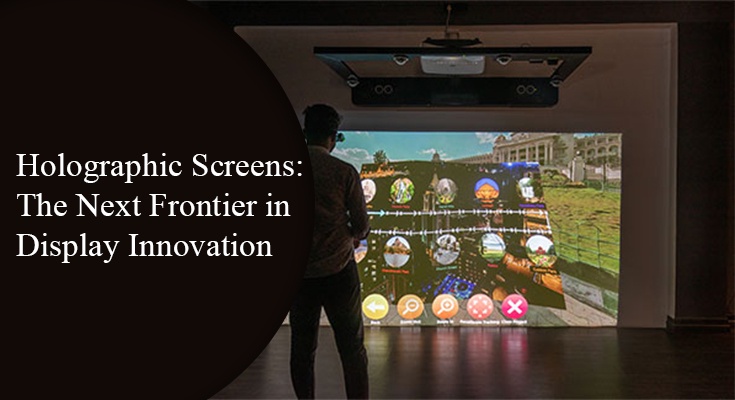In the recent dynamic and experience-driven economy, engagement reigns supreme, and holographic displays are emerging as a revolutionary asset. Imagine a corporate timeline transformed into an immersive, three-dimensional journey through a company's legacy, or a product that doesn't just sit on a shelf but comes alive in a virtual space, offering a 360-degree interactive experience. For an exceptional 3D view experience digitally, you need to connect with one of the leading holographic experience providers i.e., Vision3D. Holographic screens are not merely visual spectacles; they are catalysts for more meaningful and personalized interactions, setting new benchmarks for business engagement.
Historical Context
The roots of holography trace back to 1947, evolving from experimental phases to practical applications. The last decade has seen a surge in holographic technology's adoption, driven by advancements in spatial light modulators and light field displays. This evolution has moved holographic projection from science fiction into boardrooms, corporate museums, and customer experience centers, fundamentally transforming how businesses communicate.
The integration of 5G technology is a game-changer for holographic screens. The high-speed data transfer capabilities of 5G enable seamless streaming of complex holographic data in real-time, enhancing the user experience and opening doors to a multitude of applications.
Moreover, artificial intelligence (AI) and machine learning (ML) are increasingly becoming integral to holographic display technology. These technologies enhance the capabilities of holographic screens by making them more interactive and responsive. AI algorithms analyze user behavior to adjust holographic interactions in real-time, while ML models improve image quality and depth perception, pushing the boundaries of what holographic screens can achieve.
How Does Holographic Displays Work?
Holographic screen leverages a blend of optics, computer graphics, and data processing. Light field displays capture and project all rays of light in a scene, enabling a realistic representation. Spatial light modulators control light waves' phase and amplitude to create holographic images. The role of 5G technology is crucial, facilitating real-time data transmission and low-latency performance. Digital twins, virtual replicas of physical objects, enhance interactivity in holographic displays, while AI and ML integration make displays more interactive and responsive.
Applications of Holographic Displays
- Teleportation Units - Protohologram's Epic and Beambox's immersive experiences redefine virtual interactions, adding a layer of interactivity ideal for product activations and training sessions.
- Healthcare - RealView Imaging's Holoscope-i transforms medical imaging data into 3D volumetric holograms, revolutionizing telemedicine, surgical planning, and diagnostics.
- Automotive - WayRay's holographic screen replaces traditional car dashboards, offering real-time traffic information, navigation data, and entertainment features.
- Workplace Applications - Companies like WeWork use holographic technology to enable more natural remote interactions for events like panel discussions and presentations.
- Entertainment - Holographic technology enhances concerts, live events, and award shows, allowing for unforgettable experiences and even posthumous performances by artists.
Market Trends and Challenges
The holographic projection market is projected to reach USD 3.45 billion by 2028, with a CAGR of 23.8%. Technological advancements include wider viewing angles and touch-sensitive holograms. A research team in China achieved a 57.4° viewing angle, a significant improvement over traditional systems. Challenges include misapplication of the term "hologram" to various 3D images, leading to confusion. Touch-sensitive holograms, while promising, are still uncomfortable to touch.
Looking Ahead - The Promise of Holographic Screens
As holographic screens continue to evolve, the possibilities are boundless. Researchers are pushing the limits, achieving wider viewing angles and experimenting with touch-sensitive holograms. The integration of AI, ML, and 5G technology is propelling holographic screens into the mainstream, promising a future where the lines between the physical and virtual worlds blur seamlessly.
Conclusion
Holography's true potential lies in redefining human-technology interaction. The future isn't just about sharper images but creating a more intuitive, responsive, and human-centric digital experience. In medicine, holographic projection could enable real-time interaction with complex biological structures. In communication, holographic displays could transcend flat screens, offering truly immersive experiences.


No comments yet